To take soft locs out, carefully unravel each section, starting from the ends and moving towards the roots. Afterward, gently detangle any knots or tangles using your fingers or a wide-tooth comb.
Taking out soft locs requires a delicate approach to prevent any damage to your hair. Soft locs are a type of hairstyle that involves using synthetic or human hair extensions wrapped around your natural hair to create locs. Whether you’re ready for a new style or need to remove soft locs for maintenance, it’s important to do so correctly.
We will provide you with a step-by-step guide on how to take soft locs out safely and easily. By following these instructions, you can maintain the health and integrity of your hair while removing the locs. So without further ado, let’s get started!
Understanding Soft Locs And Their Benefits
Soft locs are a trendy and versatile protective hairstyle that offers a unique and temporary alternative to traditional locs. These locs are created using lightweight synthetic hair that is wrapped around your natural hair, providing a range of benefits and styling options. Here’s a closer look at the key features and advantages of soft locs:
Temporary Style
One of the primary benefits of soft locs is that they are temporary. Unlike traditional locs, which require long-term commitment, soft locs can be installed and removed relatively easily. This flexibility allows you to change your hairstyle and switch up your look whenever you desire.
Lightweight and Comfortable
Soft locs are lightweight compared to traditional locs, making them more comfortable to wear. They put less strain on your scalp and natural hair, reducing the risk of breakage or damage. This lightweight quality enhances the overall comfort of the style.
Protective Style
Soft locs function as a protective hairstyle, helping to shield your natural hair from external elements and daily wear and tear. They provide a layer of protection that promotes healthy hair growth and minimizes the risk of damage.
Flexible Appearance
Soft locs offer a softer and more flexible appearance compared to traditional locs. While traditional locs tend to have a firmer and more rigid texture, soft locs provide a looser and more natural look. This flexibility allows you to experiment with various styles, lengths, and textures.
Styling Versatility
Soft locs are highly versatile when it comes to styling. You can wear them in different ways, including updos, ponytails, or loose styles. Additionally, you can add accessories, beads, or wraps to enhance the look and personalize your style.
Low Maintenance
Soft locs are relatively low maintenance, making them a convenient choice for individuals with busy lifestyles. Regular upkeep involves gentle washing, moisturizing, and retouching to maintain the style’s freshness.
Growth-Friendly
Soft locs support the growth of your natural hair. They allow your hair to grow without the risk of breakage, providing a protective environment that can lead to healthier and longer natural hair over time.
Preparing For The Soft Loc Removal Process
Gathering the necessary tools
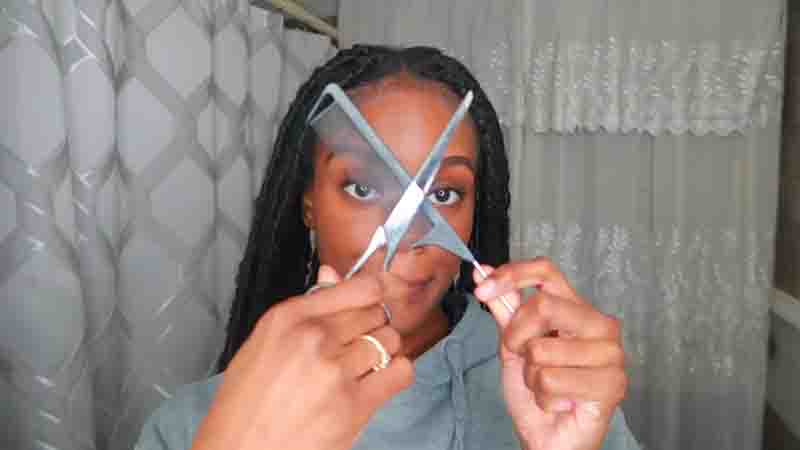
To successfully remove your soft locs, it’s essential to gather the necessary tools beforehand. You will need a pair of sharp scissors, a wide-tooth comb, a spray bottle filled with water or a detangling solution, and hair clips to section off the hair.
Creating a comfortable workspace
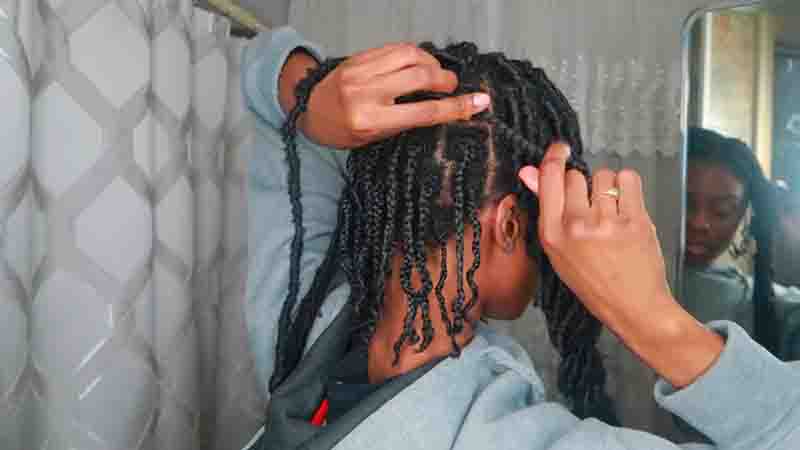
Before you start removing your soft locs, it’s crucial to set up a comfortable workspace. Find a well-lit area with a mirror and a comfortable seat to ensure that you can easily access and work with your hair during the removal process.
Washing the soft locs before removal
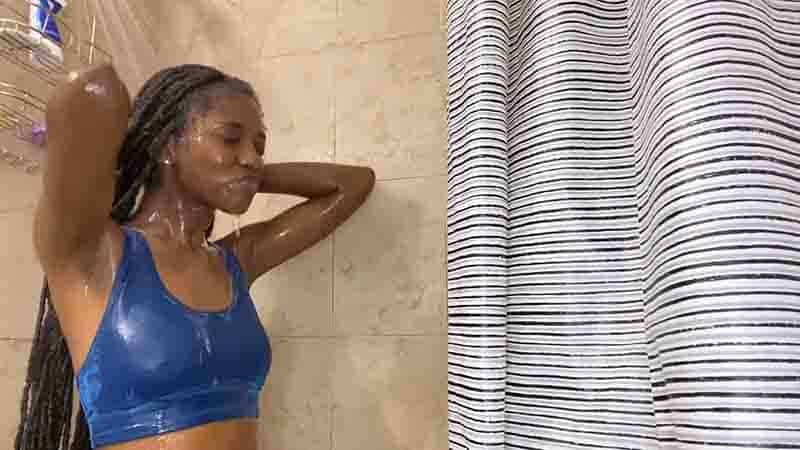
Before you remove your soft locs, it’s recommended to wash them first. Wetting the locs will make them more pliable and easier to work with. Use a mild shampoo or a clarifying shampoo to cleanse the hair and scalp, ensuring that any product buildup is removed. Gently massage your scalp and rinse thoroughly.
Step-By-Step Guide To Taking Soft Locs Out
Here is a step-by-step guide to help you take out your soft locs:
Section the Hair
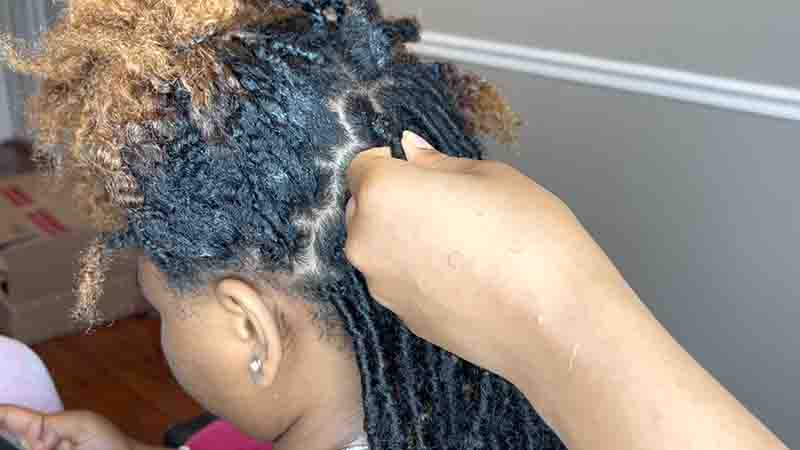
Start by dividing your hair into smaller, manageable sections. Use hair clips to secure each section, keeping them organized and preventing tangles.
Apply a Loosening Agent
Use a gentle oil or conditioner to help loosen the locs and make them easier to unravel. Apply the product to the ends of the locs in the section you’re working on. This will help reduce friction and minimize damage during removal.
Carefully Unravel
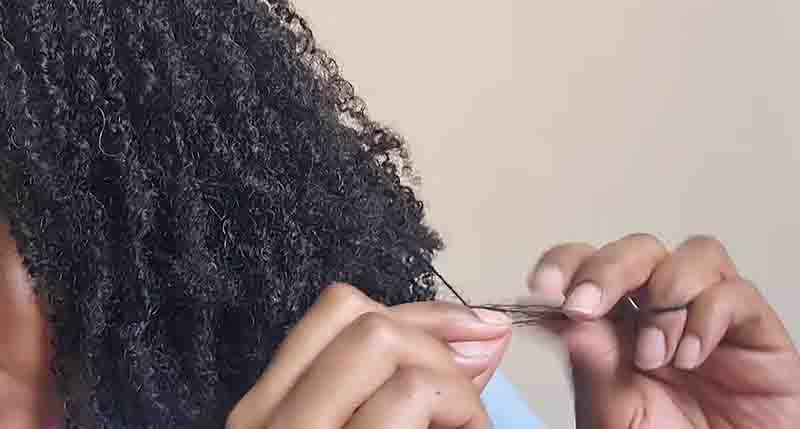
Begin removing the soft locs by carefully unraveling them from the ends. Start at the tips of the locs and work your way up toward the roots. Be patient and take your time to avoid unnecessary pulling or breakage.
Detangle as You Go
While unraveling, you may encounter knots or tangles in your natural hair. Use a wide-toothed comb or your fingers to gently detangle any knots. Be cautious and gentle to prevent hair breakage.
Repeat for Each Section
Continue this process section by section until all of the soft locs are removed. Remember to apply a loosening agent as needed and to work methodically to avoid causing damage to your natural hair.
Final Detangling and Cleansing
Once all the soft locs are removed, you may have some residual product or residue on your hair. Detangle your hair thoroughly with a wide-toothed comb, and consider using a clarifying shampoo to cleanse your hair and scalp to remove any remaining product buildup.
Moisturize and Care
After removing the soft locs, it’s essential to moisturize and care for your natural hair. Deep condition your hair to restore moisture and maintain its health.
Aftercare For Soft Locs Removal
Shampoo to Remove Residue
Begin by gently shampooing your hair with a moisturizing shampoo. This will help to remove any residue and buildup left from the locs. Be thorough in cleansing your scalp and hair to ensure all remnants are washed away.
Deep Conditioning Treatment
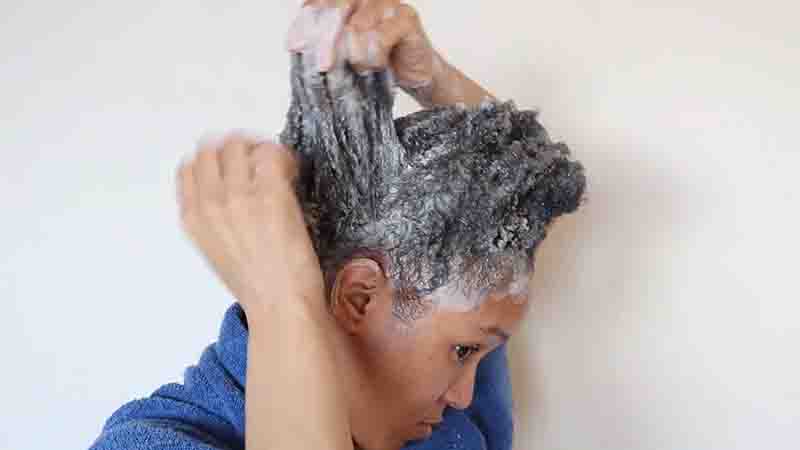
After shampooing, apply a deep conditioning treatment to your hair. Choose a product that is rich in moisture and nutrients to nourish and hydrate your hair. Leave the conditioner on for the recommended time to allow your hair to absorb its benefits fully.
Leave-In Conditioner
Apply a hydrating leave-in conditioner to your hair after rinsing out the deep conditioner. A leave-in conditioner helps retain moisture, prevents dryness, and protects your hair from environmental damage.
Essential Oils for Hair Health
Consider using essential oils like almond oil or argan oil to promote hair growth and add shine. Apply a small amount of your chosen oil to your hair and scalp, focusing on the ends.
Protective Styling

To give your hair a break and protect it from excessive manipulation, consider transitioning to a new hairstyle or protective style. Options like braids, twists, or wigs are excellent choices to maintain length retention and minimize stress on your hair.
Moisturization and Maintenance
Regardless of the protective style you choose, ensure regular moisturization and maintenance. Keep your hair and scalp hydrated by applying a water-based moisturizer and sealing in the moisture with natural oils. Gently detangle your hair as needed, and avoid tight styles that can cause tension and breakage.
Trim as Needed
Depending on the condition of your hair after removing the soft locs, you may need to trim any damaged or split ends. Regular trims can help maintain healthy hair growth.
Patience and Care
Be patient with your hair as it adjusts to its new state. Focus on gentle care, hydration, and protection to restore its health and vitality.
FAQ
Removing soft locs can be a time-consuming process. You typically need to unravel or cut each loc individually. It’s recommended to have a professional stylist assist in the removal to avoid damaging your natural hair.
The easiest way to remove locs is by cutting them off, as unraveling can be time-consuming and potentially damaging. Be prepared for a significant hair length reduction if you choose this method.
Conditioner can help to soften and detangle locs, making them more manageable. It can make the unravelling process easier when removing locs.
Instant locs are created using a technique that makes them challenging to loosen or remove without cutting them. The method used to install instant locs typically involves permanent binding.
The process of removing locs without cutting them is referred to as “unraveling.” It involves patiently and gently untwisting the locs strand by strand. However, this process is time-consuming and may lead to some hair breakage.
To dry soft locs quickly, you can use a microfiber towel to gently absorb excess water and then use a blow dryer on a low, cool setting. Ensure your locs are fully dry to prevent mold or odor.
The time it takes to remove locs depends on factors like the number of locs, their thickness, and the method used for installation. It can take several hours or even days.
Conditioner can soften and moisturize locs, making them more manageable and less prone to frizz. However, it should be used in moderation to avoid buildup.
Soft hair textures may take longer to form mature locs compared to coarser textures. The time it takes for locs to develop can vary based on individual hair characteristics.
Soft locs are typically created using a wrapping or coiling technique, which involves twisting the hair in a gentle and consistent manner. Softer hair textures are more prone to soft loc formation.
Distressed locs can be removed by carefully untwisting or cutting them. Seek professional assistance to minimize damage to your natural hair.
Soft locs can be a protective and stylish option for your hair, but it’s essential to ensure they are installed and maintained correctly to avoid damage or breakage.
Soft locs may become heavier when wet due to the added weight of moisture. Ensure your locs are fully dry to avoid unnecessary strain on your hair.
Faux locs, if installed and removed improperly, can potentially cause hair breakage or damage. It’s crucial to have them installed and maintained by a professional.
Brushing locs can help to make them smoother and more manageable but can also lead to some frizz. Use a soft-bristle brush or a dreadlock-specific tool for best results.
Soft locs are real locs created using a gentle coiling or twisting method, resulting in a softer appearance compared to traditional or more tightly coiled locs.
Combing out locs can be a lengthy process, especially if the locs are well-established. It can take several hours to days, depending on the number of locs and their thickness.
To loosen soft locs, you can gently separate or untwist them, taking care not to damage your hair in the process. Use a loc-friendly oil or conditioner to assist in this process.
The duration of wearing soft locs can vary based on personal preference. Some people keep them in for several months, while others may choose to wear them for a year or longer.
Conditioner can soften locs, making them more manageable, but it may also loosen them to some extent. Using conditioner in moderation is advisable to maintain loc integrity.
Faux locs can be removed more quickly by cutting them rather than attempting to unravel them. Seek professional assistance if you’re unsure how to remove them safely.
Removing difficult faux locs may require patience and precision. Use a sharp pair of scissors to carefully cut them as close to the base as possible. Seek professional help if necessary.
Yes, you can dip faux locs in hot water to set or style them. It can help them hold their shape and reduce frizz. Be cautious not to use water that is too hot, as it may damage the synthetic hair.
Soft locs are created by twisting or coiling your natural hair to form locs, resulting in a softer appearance. Faux locs are a temporary style created by attaching synthetic or human hair to your natural hair using braiding and wrapping techniques.
Locs can become softer over time due to various factors such as natural hair texture, maintenance practices, and the use of conditioning products. Softer locs may be a result of well-maintained and moisturized hair.
You can soften locs naturally by using aloe vera gel, diluted apple cider vinegar, or essential oils to moisturize and condition your locs. Be sure to rinse thoroughly after using any product.
To prevent soft locs from unraveling, ensure they are securely twisted or coiled during installation. You can also use loc-friendly products to help maintain their shape and integrity.
Softer hair textures may take longer to form mature locs compared to coarser textures. The time it takes for locs to develop can vary based on individual hair characteristics.
Soft locs are not inherently damaging, but their installation and maintenance can impact your hair health. Proper installation and care are essential to avoid damage.
Soft locs can serve as a protective style that helps retain length and reduce manipulation, potentially supporting hair growth. However, hair growth also depends on factors like genetics and overall hair care practices.
When soft locs get wet, they absorb moisture and can become heavier. Make sure to dry your locs thoroughly to prevent mold, odor, and excessive strain on your hair.
Having soft locs can be a good option for those looking for a protective and stylish hairstyle. However, their suitability depends on your hair type and preferences.
Soft locs can be reused if they are carefully removed without damage. Once removed, they can be reinstalled if they are in good condition.
Soft locs can withstand exposure to water, but it’s essential to dry them thoroughly after swimming or other water activities to prevent odor and potential damage.
Yes, you can go swimming with soft locs. Just make sure to rinse them thoroughly and dry them afterward to avoid issues like mold or odor.
The frequency of washing soft locs varies based on personal preference and hair type. Some people wash them every 2-4 weeks, while others may extend the time between washes.
The number of soft locs needed can vary depending on the desired fullness and appearance. On average, 100-150 locs may be sufficient for a full head.
To detangle faux locs, gently work through them using a wide-tooth comb, starting at the tips and gradually working your way up. Apply a leave-in conditioner or detangling spray to help with the process.
Conclusion
To conclude, removing soft locs can be a simple and efficient process when done correctly. By following the proper steps and utilizing the right tools, you can ensure a smooth transition from locs to natural hair. Remember to be gentle and patient throughout the process to avoid any potential damage.
With these guidelines in mind, you can confidently take out your soft locs and embrace your beautiful natural hair.

